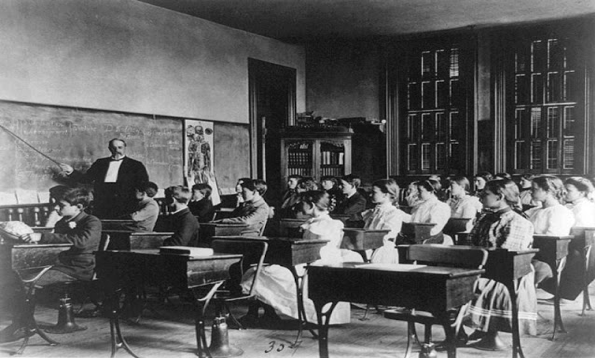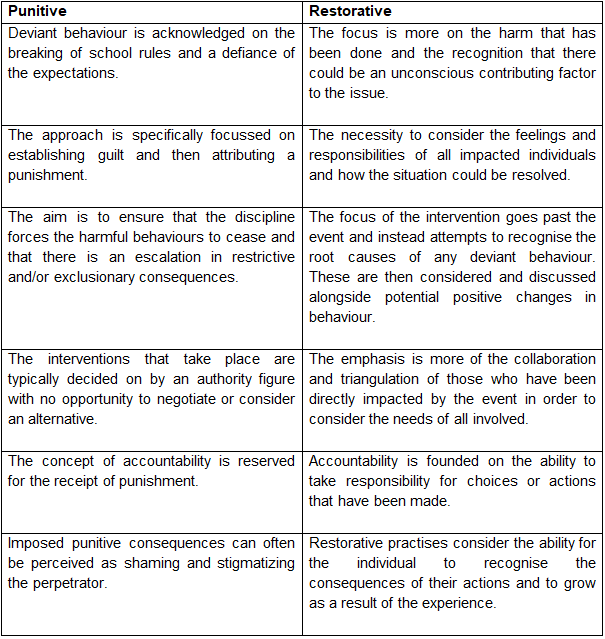
In ‘Talking about Oracy,’ we discuss the factors to consider when implementing Oracy strategies into the classroom. The thought of explicitly introducing the frequency of Oracy can often be threatened by misconceptions and apprehension surrounding peer-to-peer dialogue in the classroom. If we were to believe that a silent classroom is a sign of effective behaviour management, science practical lessons and physical education lessons would be deemed bedlam.
As with all pedagogical components, the art of communication is one to be recognised not only for its ability to promote confidence and articulation in learners, but it can also simultaneously have a positive impact of the climate and culture of the classroom. From a young age, it is clear that a lot of situations with behaviour have resulted from a breakdown in communication. The ability to acknowledge this cause and effect consequently allows us as practitioners to nurture and develop in our students the skills in which to prevent as opposed to react to situations.
In 2013, May Britt Postholm from Norway published a paper that evaluated the research findings of studies into classroom management. Postholm stresses that ‘the use of language in dialogues with other pupils and the teachers is an important tool that creates an interaction between individuals and the environment they live and act in.’ (2013)
The concept of educators nurturing life stills as opposed only focussing explicitly on those that are subject specific or assessment driven should be a fundamental reflection point when constructing a curriculum. When we shift our perception of how oracy can be developed and not regulated, this consequently supports in building a strong and rich environment for learning. In order to successfully embed these skills, there are some fundamental principles that first require acknowledgement:
Tips for the classroom
· Enforcement of expectations is key. The more that these routines are embedded and reinforced, the more students will begin to intrinsically acknowledge and adhere to acceptable standards of behaviour.
· Allow students to take ownership. In order to gain more of a collective ownership of these expectations, ensure that they are constructed and discussed as a collective. In the same way that we would build success criteria for an assessment, you can’t expect compliance until you have first established expectations. Model the requirements for discussions, through a facilitated collaboration of what should be deemed acceptable and unacceptable behaviour during tasks that incorporate communication. Instilling involvement and ownership of participants will consequently have more of a positive impact than a dictatorial approach to establishing expectations.
· Don’t avoid the noise. Embrace the idea that there needs to be noise in your classroom in order to demonstrate effective communication. However, it should still be acknowledged that noise levels can easily rise, not because of students deviating from your expectations, but because it naturally happens when people are attempting to create a dialogue in a loud environment. In those circumstances, having a discrete indicator (you shouldn’t be bellowing for quiet during these tasks…it defeats the purpose) or allowing suitable space between collaborative groups can support the noise levels.
· Build up their skills. The ability to demonstrate effective oracy skills may need to be scaffolded in some circumstances. By approaching the explicit teaching of oracy in a segmented and developing manner you are building the confidence and capabilities of your learners. Sometimes an explicit support script can have a profound impact on the ability for students to initially articulate their responses.
· It’s ok to start off small. In ‘Talking about Oracy‘, there is a chapter that acknowledges to use of both monologic and dialogic teaching strategies. The recognition that it is more than acceptable to adopt both approaches will support your confidence in adapting your approach based on contextualisation and formative assessment strategies.
· Timing is key. There are several strategies that practitioners can adopt in order to cease the conversations in the classroom. Whether this be vocalising their request, or raising their hand, another common method is the countdown. In any case, the ability to provide students with time to finish off their conversations is integral to ensuring there are no continued discussions. Think about how you feel when someone interrupts your conversation or deflects your focus before you have finished your train of thought. The lack of time to finish off conversations can lead to anger or frustration, which can then act as a catalyst to deviant behaviour.
· Remain calm and composed. Controlling the emotional responses to a conversation can guide the outcome; remaining calm and in control may lead to the same or a less exacerbated response. A sharp and vocalised confrontation with definite emotive content will provoke a mirrored reaction or alternatively fear. Fear doesn’t breed respect so this should never be perceived as a positive.
If we consider historical interpretations of behaviour management in the classroom, one can’t help but be presented with the image of the stern headmaster and the intimidating school mistress. In a profession plagued by its past, the use of corporal punishment in the classroom may be a distant memory but there are still stigmas that exist surrounding effective behaviour management in the classroom.

The idea that all teachers need to be authoritarian in order to maintain control of the classroom can often be misconstrued, with statements such as ‘don’t smile until Christmas’ being embedded into contemporary interpretation of effective behaviour management. Fortunately, through professional development opportunities made available to practitioners, a plethora of research and the incorporation of realistic expectations of students and staff, there is now more of a distinction between fear and respect.
Remember that fear and respect are two completely different entities. With respect, an individual is driven by a desire to succeed and belief on one’s self. With fear, the individual is driven by force and typically with reluctance. There are several contributing factors that determine the distinction between the two including the:
· Response to negative communication.
· Interpretation of the volume and tone of voice.
· Emotional response to the dialogue.
· Self-drive and next actions as a result of the communication.
This is a similar reasoning to the explanation that we commonly use titles and surnames in schools. The incorporation of first name terms in the classroom is often hesitated by students because of a lack of respect and teachers because of a sense of over familiarity. The avoidance of this doesn’t mean that we are attempting to create a perception of generic automatons, but more due to our need to embed these simple strategies of suggestively respectful communication as early as possible.
What we need to do, is ensure that fear is replaced with a respect that is founded on reasoning and effective communication. When done successfully, these strategies can consequently impact on a student’s behaviour post-education.
Incorporating restorative practice
When we think about restorative practice, engaging students in this approach as a preliminary form of action can help to resolve high and low-level infractions including:
· Inter-personal conflict
· Verbal of physical conflicts that may have taken place
· Property damage (graffiti or deliberate acts of vandalism)
· Harassment and cyberbullying
· Bullying (whether this is physical or verbal)
· Theft or an intention to commit the act
· Persistent class disruption
The concept behind the inclusion restorative practice is formed by the recognition of the consequences that are a result of the actions and the understanding that deviant behaviour can often have a detrimental impact on those involved. This approach is more desirable in educational settings than the contrasting punitive justice, which focuses more on the rules that have been broken. To illustrate this contrast in more detail, the table below attempts to compare the two more intrinsically:

Whether regarding the delivery or the intention of restorative practice, the impact of this approach allows for a clear cohesion between the participants through a dialogue and active communication from all parties.
The intention behind restorative practice is to engage with fundamental Oracy skills in order to promote a calm and inclusive setting. Although practitioners often begin to approach the concept of Oracy and its implementation of developing the academic potential, the ability to communicate effectively is actually a predominant approach to effective behaviour management. In order to incorporate restorative practice into your setting, focus should be placed on the necessity of using two key skills:
Oracy
In order to address the problems that have occurred, the recipient needs to demonstrate a cognitive ability in order to articulate the problems. Ensuring that participants are given an awareness of the key components involved in effective communication will prevent the frustration that can often derive from miscommunication.
Social and Emotional
Whether this is the ability to understand the issue and process an emotional response to the event, or even the ability to handle being in close proximity to an individual whilst maintaining a purposeful dialogue, it is integral to consider all of the factors that could consequently affect the outcome of the discussion. The facilitator of the conversation must contextualise the situation with consideration given to the wellbeing of the participants.
In order to approach restorative justice, there are certain open-ended questions that can be utilised in order to provoke a reflective response in the participant. These questions include:
· Can you tell me what happened?
· Explain to me how it happened?
· What role did you play in the events?
· Was anyone else affected by what you chose to do?
· How did this affect them?
· What could you do to make things better?
By remaining open to the idea that communication and reasoning can have more of a profound impact on the prevention of future incidences, nurturing the Oracy skills of our students can consequently lead to an environment that is ready and waiting to learn.
References:
Postholm, M.B. Classroom Management: what does research tell us? (2013) European Educational research Journal. Volume #12 Issue #3

Sarah Davies is a lead practitioner and head of English in a multi academy trust secondary school. She is also a lead examiner for a national exam board. Her book, ‘Talking about Oracy’: Developing communication beyond the classroom, is published by John Catt Educational and is available to purchase on Amazon.
Register for free
No Credit Card required
- Register for free
- Free TeachingTimes Report every month